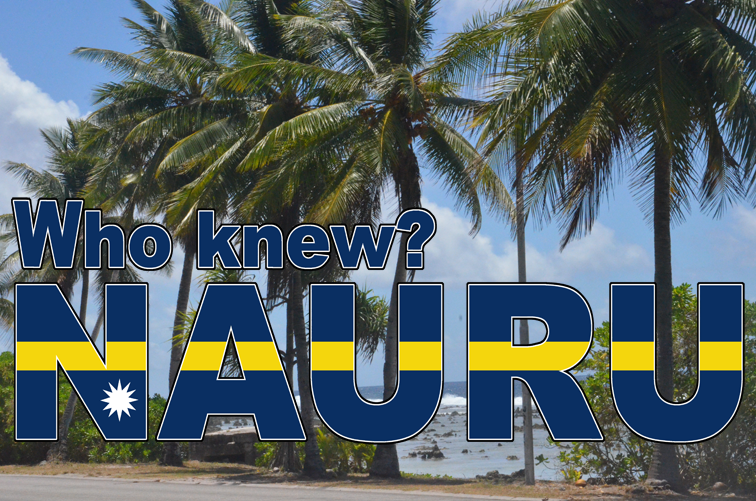Okay, I was thrilled when I learned on Jeopardy that Moldova was the least visited country in Europe. But, somewhere on the Internet (and we all know EVERYTHING on the Internet is true) I read that Nauru is probably the least visited country on Earth. The statistic thrown out was that in the year 2011, a total of 200 tourists came to the island. I do know there are only two or three hotels on Nauru. So, if you can’t find a room to sleep in, it might be a difficult destination.
For certain, it is the smallest island nation in the world. Only Vatican City and Monaco are smaller. Around 10,000 people live on its 8.1 square miles (21 square kilometers) located just south of the equator. The name “Nauru” possibly came from the Nauruan word “Anáoero” that means “I go to the beach.” It’s a good fit because fish have been a traditional staple of the local diet, as well as coconut and pandanus fruit.
You can read about how tiny it is, but I don’t think you can fathom it until you actually see it. On a map, it looks like there are several cities. There aren’t. Those locations on the map might be a cluster of a few homes or the location of a store. Yaren, my mural location, was one of the larger communities. I’m not sure if it actually qualifies as a town. Some people think it is the capital city. But, Nauru is the only independent republic on the planet without a capital city. You read that right. And, if that doesn’t convince you that it is small, take the half-hour drive around the whole country. There’s only one ring road that circles the island. If you leave your driveway going left or right, you’re going to reach your destination. (Alas! The Internet makes for great stories, but you can't believe it all. One of my mural hosts worked for the government of Nauru. He said the capital is Yaren. What are you going to believe?)
At least 3000 years ago, Nauru was inhabited by people from Micronesia and Polynesia. The twelve points on the flag of Nauru represent the original twelve clans or tribes on the island.
The original name that British sea captain, John Fearn, gave Nauru in 1798 was Pleasant Island. Germans annexed the island in 1888. They controlled it for almost three decades and called Nauru either Nawodo or Onawero. German control ended during World War I when the island was captured by Australian forces. When World War II rolled around, Japan took control of the island. After World War II, a trusteeship to govern the island was shared by Australia, New Zealand and Great Britain. Nauru gained independence in 1968, but it is still closely associated with Australia and their currency is the Australian Dollar.
In the 1960s and 1970s, Nauru boasted the highest per capita income in the world. That was from mining phosphate, which the most interesting theory suggests may have originated from bird droppings. Well, nothing lasts forever including phosphate. Mining stripped about 80% of Nauru’s land.
The official language of government, education and commerce is English and it is widely spoken. However, the islanders usually speak Nauruan among themselves. It is not similar to any of the other languages spoken on other Pacific islands. The population of Nauru is 58% ethnic Nauruan, 26% from other Pacific islands, 8% Chinese and 8% European.
Who knew Nauru? Now you do.


 RSS Feed
RSS Feed